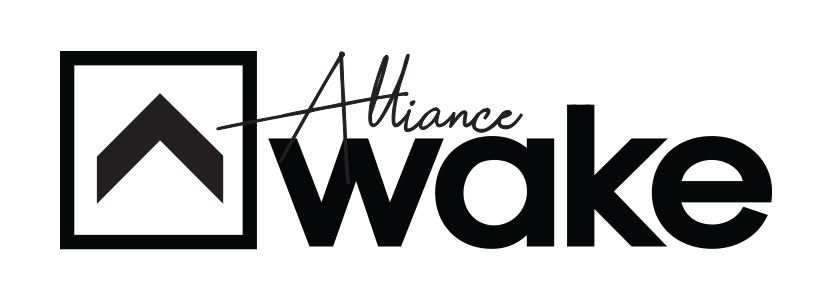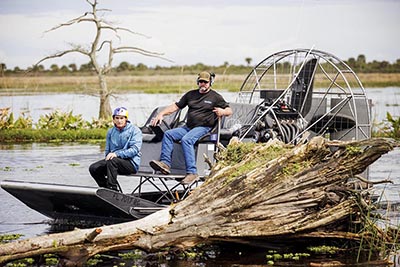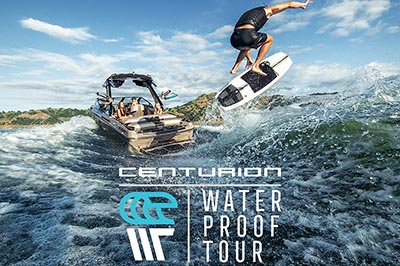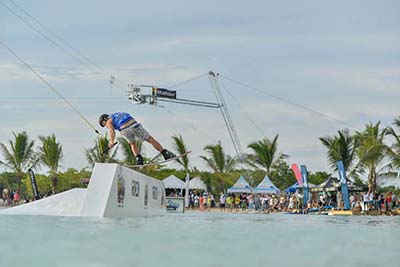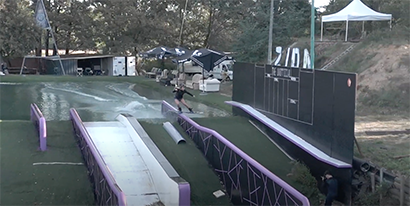Liquid Force Heritage Round Table
A culture and legacy infused wakeboard brand
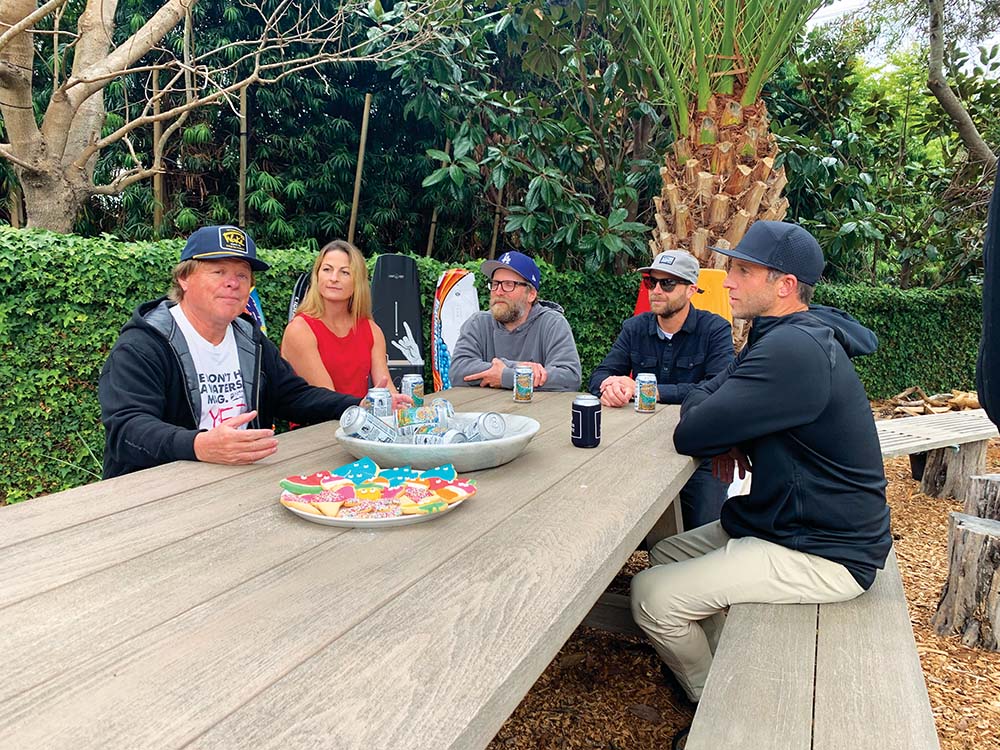
By Bill McCaffray
A number of years ago we sat down with the Liquid Force crew for a roundtable at Don Wallace’s house and had a funny, yet really compelling discussion. We decided to do it again this year for a couple of reasons – One, it was really fun the last time we did it so this is a bit of an excuse to drink beer with good friends. Two, LF and Altamont Brewing just made a collaboration beer (Liquid Force Hella Trippin) that happens to be amazing and is part of the LF Heritage initiative. Since Steve and John from the Altamont crew were in town, it seemed only fitting (also see reason one). Three, the LF crew/brand legitimately has an incredible business that is run by super fun people with amazing stories to tell and have had a huge impact on wakeboarding globally. Four, and most legitimately, this is Liquid Force’s 25 year anniversary and they are doing a Heritage series of boards; new boards with updated OG graphics. So that is why we are here.
 The group from 5 years ago did look, or at least sound a little bit differently than this group though. That crew included Tony Finn. If you know anything about Tony you know he is loud, opinionated and tends to dominate conversations. All things that helped LF get to where they are today. Tony moved on a couple years ago and now Don runs the show but largely with the same set of DNA at the table.
The group from 5 years ago did look, or at least sound a little bit differently than this group though. That crew included Tony Finn. If you know anything about Tony you know he is loud, opinionated and tends to dominate conversations. All things that helped LF get to where they are today. Tony moved on a couple years ago and now Don runs the show but largely with the same set of DNA at the table.
So who is at the table?
Don Wallace, General Manager – I’m just going to be candid here; Don is the reason that LF is successful from a business perspective … period. Tony and Jimmy had excellent ideas and divided the tasks well; Jimmy designs and creates and Tony markets and sells. But ultimately it has been Don that managed sales, growth, direction and management of the business and lead LF to be where they are as a business and a brand today. I’m not taking anything away from Tony and Jimmy, but Don deserves a ton of credit for how strong this brand and business are.
Jimmy Redmon, Founder – Jimmy is the mad scientist behind almost every board LF makes. He may be considered to be eccentric by some of his peers and oftentimes frustratingly late with, well, everything. But when it comes, it’s genius. As Jimmy says, “You can’t schedule creativity, maaan.” Just know the “late” jokes throughout this discussion were all pointed at Jimmy. All likely deserved but also well deflected or ignored … not sure Jimmy gives a shit that he is often late.
Aaron Grace, Marketing Manager – AG, for short, may be the second longest standing member of the LF team. Can’t remember if Don was there first or not. Bottom line is Aaron has been riding for or managing riders and managing marketing for LF for as long as I can remember. Aaron is also one of the most connected people I have ever met and those connections with other brands have been a huge benefit to LF as a brand and to many of the team riders as well. So if it’s cool and attached to LF, AG likely had a big hand in it. Like this Altamont deal.
Melissa Marquardt & Shawn Watson, Riders and Ambassadors – If you are reading this, you should really know who these two are; icons in the professional wakeboarding realm. Melissa and Shawn are largely retired these days but they both lived through and created a lot of what and why LF is what LF is.the LF brand is so infectious.
So let’s just jump right into the discussion and put you, the reader at the table.

EARLY DAYS & GRAPHICS
Bill McCaffray: So you are doing these throwback graphics, one of which was essentially just solid colors and some odd textures. How did all of that come about?
Jimmy Redmon: This is a celebration of our 25 years of Liquid Force. So we’ve taken boards we’re making now, but then gone through 25 years of graphics to bring them back out and reintroduce those graphics on a whole line of boards. So, you know, from the Trip art on our pod wake Surfer, to Harley’s board, the graphic that started it all, the Free, where we had one day to make a graphic and had to make it to World’s and didn’t know what to do. So we made every color you could think of the night before.
BM: Tell that story, it’s classic.
JM: So you know, I just have a tendency sometimes to be last minute, but very rarely, you know (laughs). So as we were launching the brand I was focusing on designing and building the boards. We’re finally getting the tool cut, to produce the boards. So we’ve got all these riders: Gregg (Necrasson) Johnny King and Rich Goforth, and everybody is super stoked to go to Worlds and ride these new boards. So we are just going to bring boards to the event, and this is like the day before Worlds. Then somebody looks at me and goes, “What’s the graphic going to be?” And I’m like, “Oh shit we don’t have any graphics.” So we went to the fabric store and walk in and go, ”We need graphics!” And the lady behind the counter says, “we have fabric. What color do you want?”
So we literally bought solid and printed fabric and pressed them into the boards. We bought a sample of about every color we liked, almost every chunk of cloth they had in this Hancock Fabric Store and went back to the factory and stayed up all night. The rule was, we couldn’t make any one board more than once. So we showed up (to World’s) with only one board, but it looked like we were huge because every single board was unique on the top and the bottom. We made 25 boards and every team rider had their own board graphic, everybody had their own thing.

Don Wallace: So I’ve heard you and Tony tell that story before and I honestly never believed you guys, like literally it was the night before Worlds and you had no idea what the graphics were going to be? I didn’t work for the company at that time but I remember when I started it was like, we must have been selling those boards a lot. Everybody had seen the crossover graphics before and I just remember being so annoyed by all the calls. Like, “We don’t stock that.” Yeah, it was the Skittles graphic theory.
BM: Who were the athletes at the time
JR: So Gregg Necrason, Rich Goforth, Johnny King, Drew McGucken, Sarah Klein and Anthony Monaco. It was at Worlds. But we were a total start up. So we told these three groms, one of them was Philip Soven, and the deal was we gave them boxes of stickers. We said, “If you plaster this place with stickers we’ll give you a rash guard. Then if you plaster enough, we’ll give you a hat, and if you can rip we’ll give you a board.” So like the first day of the event, the World Pub people come up together and say, “Look, I know you guys are enthusiastic about starting a new company, but our staff had to remove 1500 stickers last night (Laughs). So, can you be cool?” You know what they say, under 18 is vandalism, over 18 is marketing. So the next day I was like, Phillip, Brian Kennedy and Bob, we just gave him like 2500 stickers. I told them to especially target cars that had hyperlight or any other wakeboard brand on them, just cover their windows. Full on guerrilla marketing at its best, but we hired the groms to do it and paid them with stickers…

ALTAMONT HELLA TRIPPIN BEER COLLAB
BM: How did the relationship with Altamont come about?
Steve Sartori: This is a big celebration batch right here. Back in the day on the Delta, I became friends with Chris Patterson (LF Sales Rep) and all of us used to ride together. We have always just stayed in touch with the LF crew and I have always ridden their boards.
DW: Steve and his crew just make killer beer and started out really small. I think I met Steve when he was just brewing out of his garage or when his Backyard was his brewery. And then just slowly it’s grown and it’s grown and grown and grown. And you know, the connection of all of us liking beer, all of us being friends with Steve and his whole crew and then their love for wakeboarding. It only made sense to try to collaborate.
Steve and Chris had a connection. So I reached out to Chris and Chris connected with Steve and we just started talking, it took about 15 minutes of talking and they’re like, “Yeah, let’s do it.” It’s been a couple months in the works so far. We got the trip graphic from Drew Brophy, so his art is on the can. Which when you talk about Heritage, that by far, I would say is our most popular board besides maybe the Watson classic.
SS: So yeah, be on the lookout for it. If it’s not in your local store, you can order it online from Altamont Beer Works and get it shipped to you. So, yes, if you live on the east coast, you should just move to the West Coast.
BM: So that is the LF Trip graphic on the beer correct?
DW: It’s awesome. So that graphic originally came from Drew Brophy. It’s his signature look and it was just being in the right place at the right time. I had moved out here and Lost (surfboards) had just come out with that video by 419. We went up there to talk to Matt Biolas and get a board made and I came out with my board and Drew was hand drawing on boards. So I just said, “Hey man, can you draw something on my board?” It was pretty cheap then you know, to get them to do art. So he drew on this board and it turned out unreal and actually became the inspiration for the Trips. Then we’re working on the idea for the board and every time we rode it was like, man this thing feels crazy, it’s a trip-ride in this thing. So I was like, “Oh, that’s the name!”. So we go and meet up with Drew and work together on Art. He said, “What’s the inspiration?” So we explained that the board’s called the trip and that started the process.. He started to pencil sketches and turned it into this giant, you know, 4×8 sheet of plywood, just beautiful artwork, which is what’s on the can and on the Heritage Pod now.
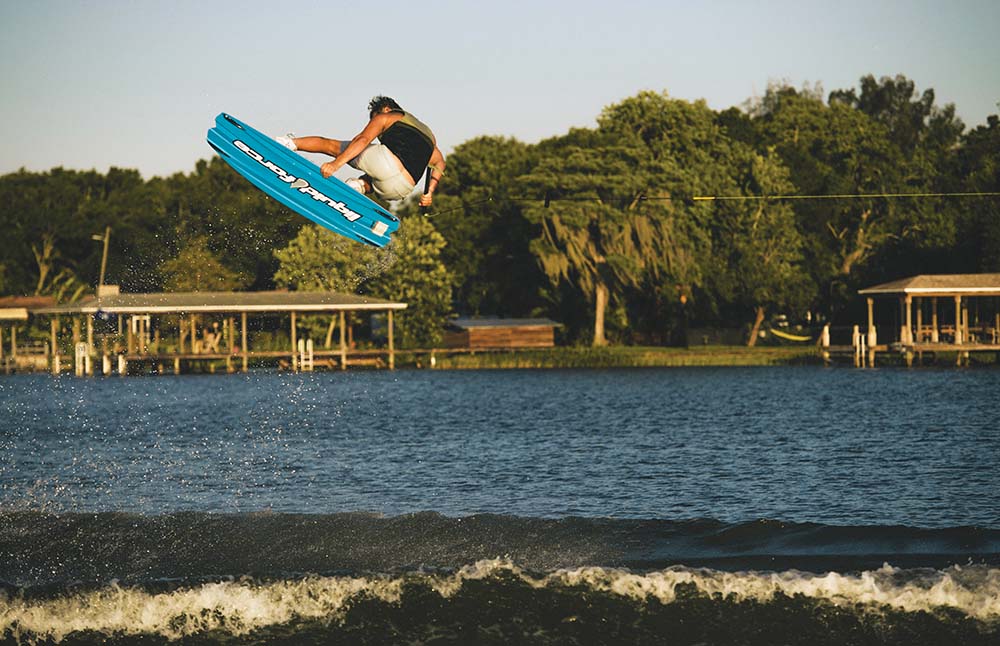
HERITAGE PRODUCT, INNOVATION & CHANGE
BM: When will the Heritage products be available?
The Liquid Force Heritage products, including the beer are going to be ready in June. The boards will only be available through specific specialty retail stores that are big LF supporters. Strictly all the top accounts, whether it’s the best accounts in Australia or the best shops in Germany or the best accounts in the US, they are going to be carrying it and it is limited. So not every dealer is going to have as many as they want. So from a consumer standpoint you know in certain parts of the country it might be a little harder to find but yeah all of our limited stuff’s going to be available.
BM: So let’s step into how the sport has evolved in the last five years. Specifically, let’s look at it from a product standpoint because we are talking about Heritage products, which is sort of the culmination of the last five years. So what’s changed or has been different in the last five years about the way you innovate or create?
JR: I think the biggest change is we’ve always called ourselves Liquid Force Wakeboards and although wakeboards are still the biggest product category, it’s definitely more all of wake now. We’re in every cable park, surfing is huge and now there is the foil movement. It’s not just wakeboarding anymore. I mean, wakeboarding is the heritage. That’s still what we think is the coolest part about it, but there’s just so many other aspects to it now. I mean Liquid Force has become a board sport company and anything that’s fun to stand on sideways we are into. Short of making custom surfboards. You know, if you can do it behind a boat, If you can do it at a cable park, now if you can do it with a little wind and even get rid of the boat, it’s all just expanding your definition of fun, it’s all Liquid Force. So for manufacturing, we had to come up with a different way to make boards, closer to how you’d make a snowboard. Coupled with the fact that we grew up learning how to make wakeboards. So we came up with a better way to make boards that would last longer on the cable. Then, when we get into wake surfers, we find a better way to make wake surfers a way where you can build a performance board that doesn’t ding. Thanthat translated into making a better foil board. So it’s just this constant evolution of fun and evolution that feeds on itself.
AG: The big thing for me is how the boards are now so durable. Our team back in the day, when I was team manager, I would have to give out so much more product to team riders because it would wear out quicker. Yeah, I feel like a boat rider may literally go through a board or two in a season now, and a park rider might go through two or three. Keep in mind these are people that are riding them every single day. So to some extent, it’s funny to consider that we are more sustainable because the boards are lasting so much longer. We talk about things like our solar powered factory, that is one side of these sustainable things. But in reality, the fact Harley can ride one board all year or maybe two, whereas back in the day you (Shawn) and Greg would go through like ten boards.
Remember when Lyman was doing that huge line for his ender in Oakley’s Push Process? He was going huge and landing on that down rail. In that particular shoot, over two days, he went through 21 boards. Seriously, he went through 21 boards in that two-day shoot. Then fast forward to Raphs Beyond Perception. After I saw the footage I was just like wow, I guess we are making boards a lot stronger now. I asked Raph, how many boards he went through, and he says, “Just the two you sent me for that entire shoot.” So that’s a huge leap forward in the quality of the product and what we have learned over time.
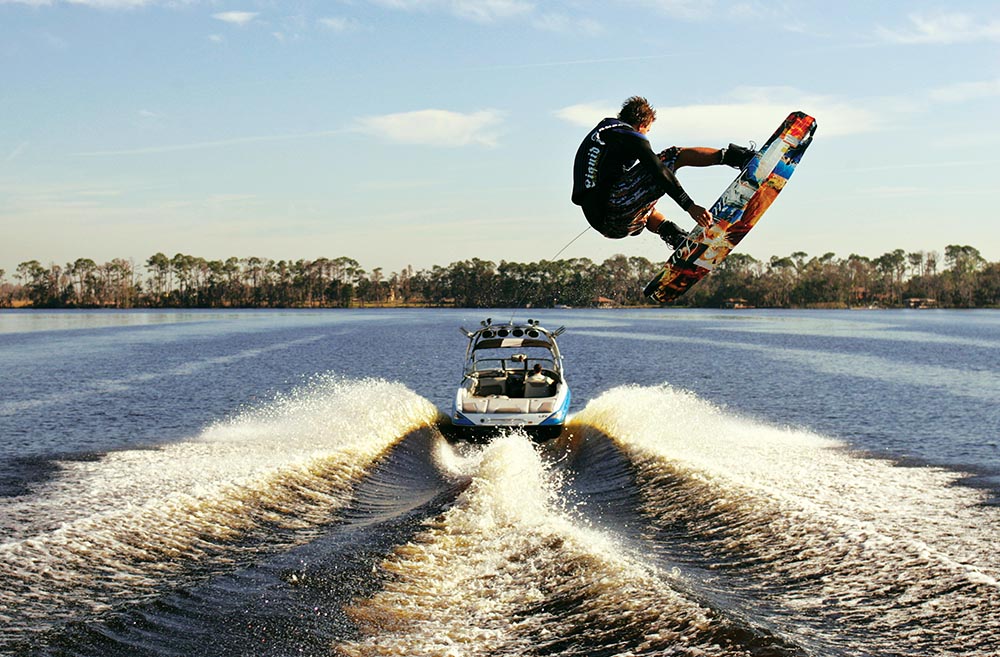
DW: So I want to let Jimmy expand on this because he’s the manufacturing guru. I think one of the things we’re all really pretty proud of is the changes in manufacturing and the push to better products. Which for the consumer is a better value. But also what you (AG) just mentioned, about how better, more durable products are also more sustainable. Athletes aren’t happy when they go through ten boards. Jimmy expand on our manufacturing, there’s so much we are focusing on and accomplishing in the sustainable realm with our factory.
JR: I mean, it’s everything because you’ve got to deal with the fact that we couldn’t innovate affordably here in the US. If we didn’t go global in our manufacturing, how could we do that responsibly and start getting into these different ways of making boards? Then there’s all these different materials and we are now down to considering things like; here’s a tree that makes a great core but where can we get that tree the best, and is that tree something that’s sustainable? So the cores on a park board is this wood called Polonia. Well, that tree will grow up to 20 inches a year. So it’s not like you’re clear-cutting something. It’s like bamboo, but it’s got all these longitudinal grain properties that make it far superior to Bamboo. The same way we look at skateboard wheels and go, hey, that bounces, you can grind it up, turn it into something that becomes a liquid. Finding urethane and reusing it, mixing in colors and it makes a better more durable park board, but it’s also a material that’s very responsible. We apply that concept all the way to the packaging. You know, why not recycle recycled packaging, why not change? We are trying to use less cardboard. The amount of cardboard used to protect boards in shipping is incredible.
Yeah, and it’s all about the big picture. These things, when you look at them individually you have to ask, is it worth it? And arguably each thing by itself, some of them aren’t. But when you look at the cumulative effect, it ends up being huge and it gets people into the mindset of reusing. Making a board that lasts longer, making a board that doesn’t break as easily is a step in itself. Then you get all the way to where we produce in the desert, and everyone’s complaining about the heat. There’s no shortage of sun. So we just looked up. The answer was beating down on our heads all along.
It’s so cool now, we have the Solar Powered Fun Factory and 100% of the energy we use is produced by solar panels. We’re making boards with the sun and now we get these Aero cores. They are lighter than we’ve ever made a wakeboard. Think about the first Liquid Force board, the first Free that we made. It was only a 135 and weighed more than Harley’s Boot and binding combo now. That’s amazing. It’s so light it’s crazy. I’m just going to hint at the future; everything builds upon everything that came before it, and we’re working on stuff to further revolutionize.

DW: We have made evolutions in sustainably without sacrificing performance, but that in and of itself will be a sustainability story. We aren’t trying to kid anyone by acting like wakeboarding does not have a footprint. But cable riding has minimal impact and I think the best thing we can do is understand our sport has this natural problem and we’re doing all we can to help do as much as we can to counteract that now. Which I think is awesome.
I’ve honestly had people give me shit. “Oh yeah, but your sport is still so bad for the environment.” I think back to like, remember Jeremy Jones, he’s doing all the stuff for Protect Our Winters. He has people give him crap because he still drives a car and he’s like, okay we’re still going to live our lives, but I’m doing as much as I can. I think that’s what this route is, and that is valuable and responsible.
JR: Go back to the beginnings of wakeboarding, right? And there was this amazing picture that this friend of mine took that was a super moody, ethereal picture of a flip on a wakeboard that became the logo of the WWA. And he’s a photographer for Surfer and he sent it to Outside Magazine and they loved it. Then they ask for the story behind it. So he tells them it is a flip photo on Lake Austin, wakeboarding. And when they heard that it was behind a boat, they said no, they wouldn’t publish the photo. Now, fast forward to just a few months ago and Don and Aaron are talking to Outside about foiling and what Liquid Force is doing and sustainability and they’re stoked on it. So, you know, we have stepped up the things that we can control to minimize impact to the environment.
All the products in the factory are now built with solar power. The whole Factory is being powered by solar and they actually produce more power than they need. So they work to produce for 120% of their power usage. They’re storing it for use at a later time and in their case, because they produce so much, it just goes back in the grid. The initiative for all of Dubai is that 25% of everything will be solar powered by 2030 and they’re trying to have big sections of the country run 100% on solar by 2050 and the rest will be run with other renewables like wind. That’s pretty cool. So when we went there they’d already considered solar as an option, but solar panels were constantly evolving and they were waiting for the right time because all these Innovations in creation and storage. It’s been amazing, they are always coming up with better ways to build panels and make it cheaper.
Dubai was going to host the World’s Fair in 2020 but Covid kind of shut that down but their whole theme is sustainability and renewable energy. So here’s our factory, literally kind of across the street from where the World Fair was going to be and it’s the first factory of its kind that’s a hundred percent solar. So the timing was right, the investment was right. Now their business has evolved into making boats with 100% solar energy.

DW: When I look back at the last 5 years there are a ton of changes, but one is just our office location. When the brand first started we were based in Oceanside sharing an office with another company. Oceanside was awesome. But I remember the day when Tony Finn said, “Hey, I think I found a spot in Encinitas, we should move there.” I remember at the time just being like, that’s a nice town, I can’t afford to live in it so at least I can work there. So, to find that office that was half a block to the beach and in the heart of the action sports community was amazing. Then, in the last few years, one of the biggest changes to ever happen at LF is Tony leaving as an everyday part of our company. I mean, he’s still part of our company as the founder, but Encinitas was Tony’s deal in my mind. So the move to Carlsbad, was the first time without Tony that all of us made a really big decision. Now we have this whole new life here where there is still the same focus on fun, but it’s just different. I think that’s kind of like a new pride for LF with this new generation but with the original ideas and motivation still as part of our DNA. Carlsbad is so rad because there’s so many cool action sports companies that are here, and a lot of us live in Carlsbad or have lived in Carlsbad. But leaving Encinitas was emotional. We were in Encinitas for so long, and our old office was this weird little kind of trippy space. For some reason we were just all sad to be moving. Now, we’ve been in Carlsbad for two and a half years and I wouldn’t want to go back. I like that our new office is so awesome. We just have a rad deal and I’m finally used to saying, yeah, Liquid Force is in Carlsbad.
SW: I think one of the biggest changes, and it sounds a little weird, but it’s so cool to have all these amazing new athletes that could care less about the old days. They don’t even know about BROstock and what we we’re doing. What we’re doing now is so cool. And there’s been so much advancement and growth that a solar powered factory is just an everyday deal for them. They’re stoked on foiling and all these things that just 5 years weren’t even on our radar. I was talking to Josh Letchworth the other day because he might shoot some of our Heritage stuff for us. I was excited to have Letchy come back and shoot some of the riders and I started thinking to myself, I don’t think our athletes even know who Josh Letchworth is. Right now, I don’t think Gunther, who is kind of the oldest now, has even met him.
So think about this, it’s been 25 years. Think even like ten years ago? Our team is just such a different thing now. In the past, 100% of our athletes were American riders. Maybe we had somebody from Canada, maybe. Then we had Australia. Now, it’s like, especially on the women’s side. I mean, in the U.S. it’s Megan, and she has kind of taken your torch (Melissa), and she’s going for it, but then we have so many badass women all over the world and I think it’s so cool. That our brand is so mobile and from a marketing standpoint it’s so global. We have people that work for us in our marketing department that live in Germany and Australia. I think that’s what I mean. That’s been in the last five years. I think we’ve had big changes, now that it’s been happening for 25 years it’s become a very global thing.
AG: It used to be that when one of our reps needed a rider for a demo or something, we had 15 riders to choose from between the men and the women. Now, we have a Watson and a Melissa in every country.
And a lot of the original athletes, Shawn for one, Shane Bonifay, Tom Fooshee, Nico who actually still rides for us, but they’ve all taken on different roles with the brand now. Shawn is still an ambassador, Tom is our team manager. Now Shane runs all of our video. Nico’s our European Team Manager. Yeah it’s just less training when our next employee has been with the brand for 10 years. Harley Clifford came to us with this idea of this whole other brand called Wake Foamies. That was kind of his little brain child, but he was like, “Hey mate, I don’t know how to run a business, but I like this idea.” So he came to us with a business plan, and a whole additional brand and now he’s kind of the brainchild behind it.
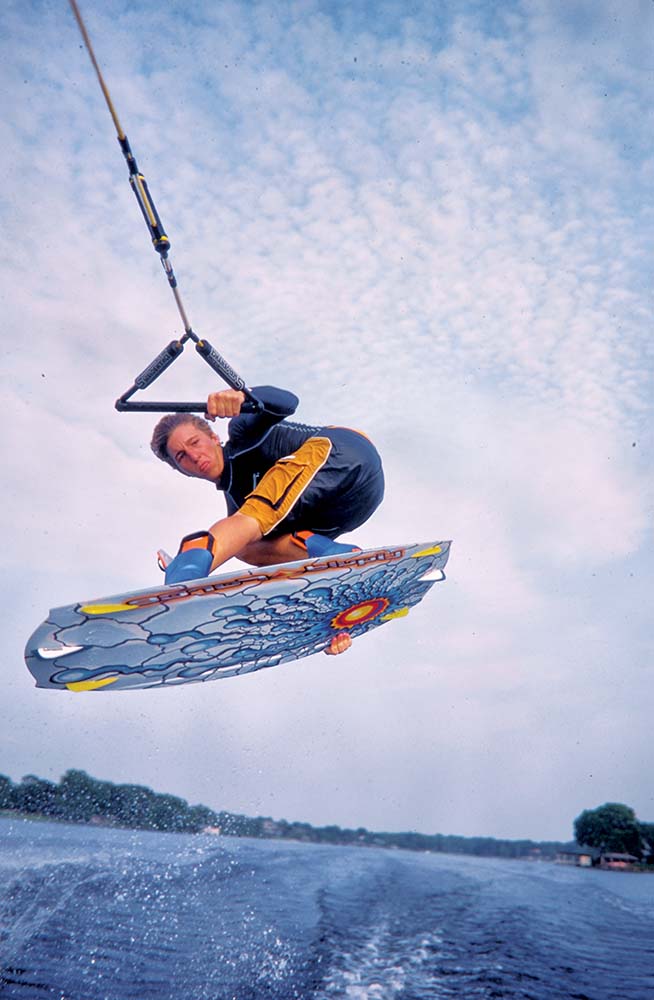
DW: Yeah, like why do brands have athletes? Because you’re trying to make money off of how cool they are and how good they are at what they do. But the good brands are the brands that treat their athletes well. There’s a lot of brands that treat their athletes like friends and family. So it’s awesome to see somebody like Tom, who we all really respect doing the job that I did, then you (AG) and you too (SW). Yeah, I love that things have evolved that way.
It’s gone from the people that have started it, like Jimmy, to the people that created the moves that inspired people to do it like Aaron. Then, to Watson, Melissa, Harley, Tom. Now they’re teaching their kids how to ride and go out in the boat. (To SW) I like your post the other day with your daughter, you know. I mean, Harley is on the boat with his kids, Tom with his kids. it’s rad, you know. I think it’s the fourth generation with these kids.
DW: And it’s the same way with Harley/ Wake Foamies and Liquid Force now. I always say we’re in partnership but we own Freedom Foil Boards which is our good buddy Chris Sayer. It is his vision and dream but we are helping make it happen. It was his passion project and then it turned into a job and now it has turned into a brand. And what’s interesting is that Chris and I were roommates with Keith Kipp for a year at the lagoon in Carlsbad. So Chris was with Hyperlight, and I remember so many prototypes for us would be tested by Chris and Hyperlite prototypes will be tested by Keith. So we had all these good times in the early days and then Chris goes off to be a firefighter. As friends we stayed connected and next thing I know he’s started this Freedom Foil Boards. A full ocean surf foil brand. Personally, at the time I thought foiling wasn’t interesting and I wasn’t that into it, but at the same time, we had started doing the wake version of foils. One thing led to another and now Freedom is part of Liquid Force.

WOMEN, TEAM AND W$R
BM: Liquid Force has always been a big supporter of women in the sport, largely led by Melissa for almost 15 years. Melissa you have always been soft spoken but your riding spoke volumes. What was your time like with LF?
MM: Honestly, I just loved riding so much, it was never something that I considered a job or that I felt I had anything to prove. When I first started riding with all of the guys at Canyon, I knew I wanted to be a professional and do this. I just liked it so much that it’s all I thought about. They couldn’t get me out of the water and they had to cut me off. I was always saying, “one more, one more.”So, I saw Aaron at one of the Canyon Lake contests. The first time I saw him, he was the same age as my brothers and there to watch them. I was just looking up to them. Being like this shy little girl and I don’t know. I just, yeah, I just loved it so much. I never thought I’d be a professional but just kept doing it and doing it.
DW: We loved how much you fell in love with it. You say you are shy, but you were never shy with us. Like, giving us your ideas or opinions. You had some of the best ideas of any of the team. That’s the thing, some people just aren’t willing to step out and share their ideas, but that is how a company gets better. It was so valuable to have someone like you, that had all of this experience and who wasn’t afraid to share your ideas. Watson had ideas too, but I always thought it was probably a little bit harder for a female to be in this sport, that was pretty much male-dominated, to feel like they have an impact. But every single person in our company would pay attention when you would say something about a product because you had great ideas.
It was always your riding and your ideas that talked first. To me, that’s why you just had so much respect. I mean, you were the girl that was hanging in the boat with Randy Harris because you believed you belonged in the boat with Randy and Ricky and all that, and that’s real people.
JR: Yeah … I mean, the W$R days were pretty crazy. They definitely had a special place in their heart for how to ride and it always had some real edge to it. But I think because Melissa was a part of that, that she helped more women feel like they could be a part of the sport and got more women to participate. I remember Tina Bessinger, she was so focused on trying to get more women into the sport and she did a great job. But, Melissa had the influence over the entire sport and our brand so you were the first one that really influenced the brand and that led to others like Amber Wing,Megan or Anna to do the same. You were like, “I like this sport, we can all do this. We may not get rich off of it, but we can make a living and we can progress the sport and our brands are going to pay attention to us.” I remember that all of the guys on the team would like your graphics. There were so many times with board graphics or binding ideas that I would go, “Wow, Melissa, this is rad.” And some of those ideas became a guy’s graphic because it was unreal.
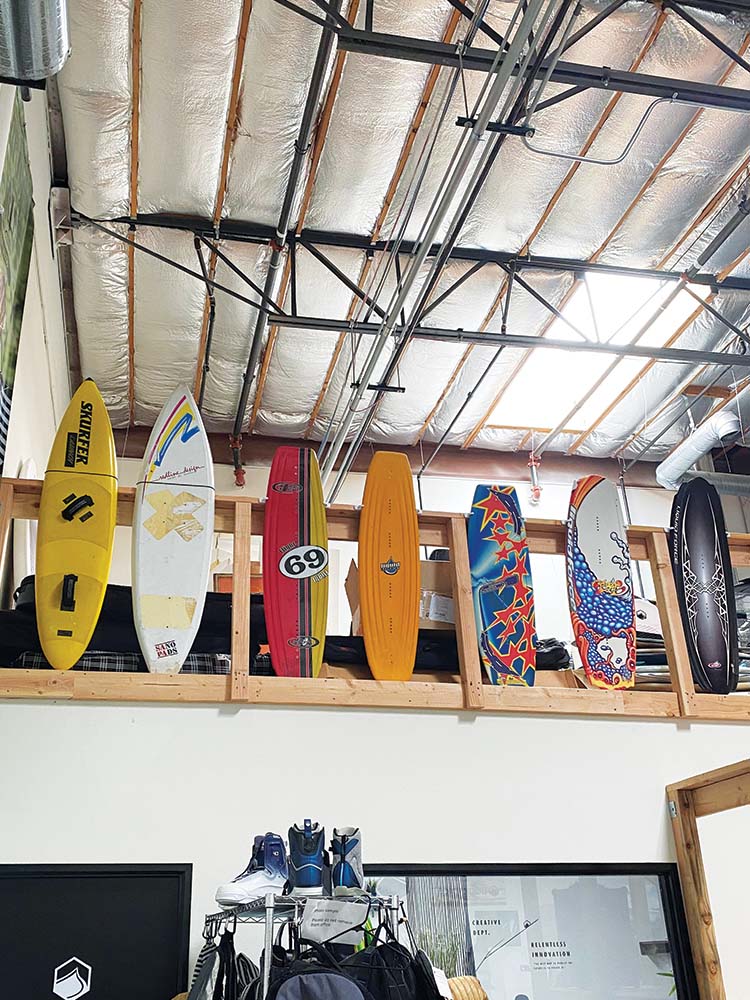
LOOKING BACK ON 25 YEARS
BM: In the last roundtable discussion we asked the question, Would you be happy with what you’ve accomplished at Liquid Force if you had to leave right now? Has that changed for any of you?
MM: Yeah, I mean, I started riding my first wakeboard, when I was 13, it was a Liquid Force board. So that was legit, you know? That was a long time ago but that was the first wakeboard I ever had. So Liquid Force had a huge influence on my life. I’ve been riding for Liquid Force since I was 15, it’s the only board I’ve ever really ridden. LF just offered so many opportunities in my life. I’ve met so many awesome people around the world. Some of my best friends today are the people I rode with and traveled with for 15 years. So it’s been a long time. I always wonder if we’re going to all be friends when we’re like 60, 70, 80, and kind of looking at it like that tells me that it will be a big part of my life forever.
DW: Would I be happy with what I’ve accomplished at LF if I had to leave right now? … No, because I’m going to work for Liquid Force for the rest of my life (laughs), which I wouldn’t have thought when I signed up for this gig in 1997. I thought, oh, this is cool, this is an awesome job. But then I quickly realized I had no experience in action sports. I was just a college graduate, but Jimmy and Tony and our athletes, Greg specifically made me feel like I mattered. I thought that was really cool because from Day One, I realized that if you work hard, and if you care, and if you put effort into things like this brand, it becomes a home, and it will be a good home for you. It’s that way now. Here it is 24 years later, very different roles, but it’s cool because I just can’t imagine myself working anywhere else. And if I got fired tomorrow, I’d be in a good spot because I would feel like we’ve given a lot of opportunity to other people through the growth of this brand. I don’t necessarily have any specific reason to be working at Liquid Force in the terms of, I wasn’t the best wakeboarder in the world or I wasn’t the founder of the company but because we all cared about the brand.
It makes me feel good that the brand we’re running is creating opportunities for people that have been with us for a long time. They started out as athletes and so I think that’s my biggest love of Liquid Force. It’s so cliché to say “family,” but it really is like that. If somebody wants to be working for us their entire life, they can be family.
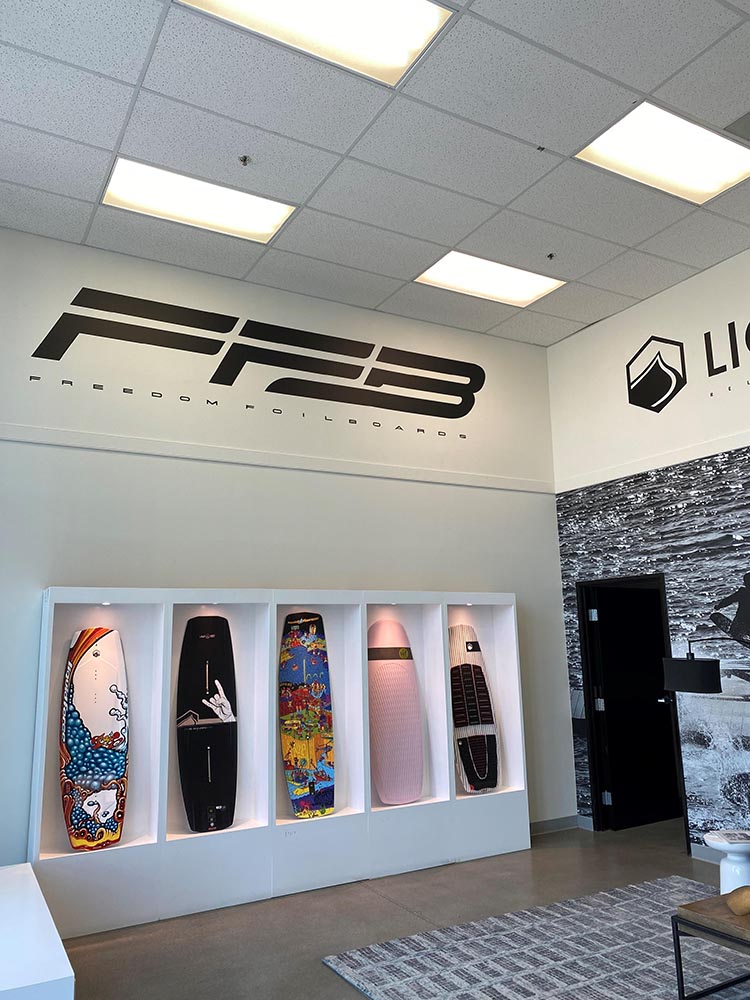
SW: As I look back at when I was a kid, I would watch “Hot Summer Nights.” Nobody even knows about that these days. Watching Tony Finn commentate on that and the Bud Pro Tour, watching all these guys like Parks and Parks was only one year older than me. I remember watching and thinking, “Oh my God! that’s what I want to do!” So I just started riding as much as I could and going to local comps. Then I go to the 97 Worlds and I’m riding and Jimmy Redmon is a judge and Tony Finn is the announcer. After I do my run I get approached by these guys and they say , “Hey, we want you to ride for Liquid Force.” My dad and I just came to this event to see how it would be, and next thing I know I’m getting a deal with Liquid Force. Then I met Don Wallace at Surf Expo and two years later I have a pro model board, the Helix. It was just this crazy evolution of my career while working with Jimmy Redmon creating boards. So it’s just been an insane deal. Grace as my Team Manager and being able to ride for Liquid Force for 20 plus years was incredible. Then at the end of my career my body couldn’t handle wakeboarding every day, so now I surf and foil. My knees are shot, I started wakeboarding when I was 12, I was skiing before I was 10 years old, I’m 38 years old now. But I kind of like doing something else. I live here in California but I’m still a part of Liquid Force as a brand ambassador and I like that I’m a part of the history of the brand.
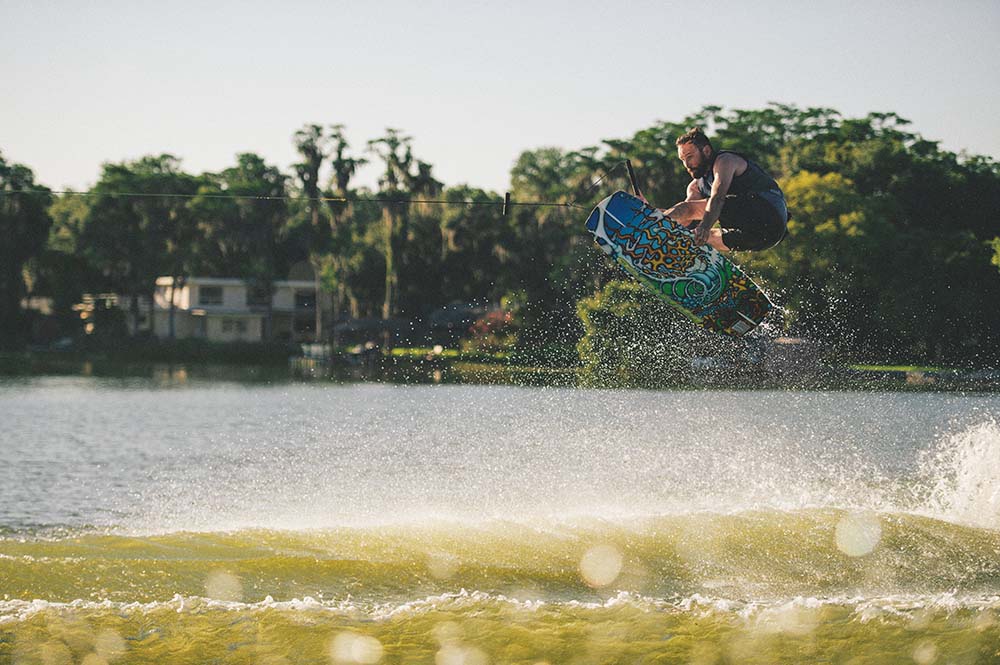
AG: I just think it’s cool that we’ve had this impact on a lot of our athletes and they’ve been able to take some things they learned as a rider and apply it to their new career. I guarantee any Liquid Force athlete can handle themselves when it comes to office Christmas parties (laughs). My personal goal was always to see as many places and meet as many people as I could through wakeboarding. I have been able to do that and I’m still doing that on a global scale. I’ve traveled to most places that I’ve always dreamed of. The first thing I told Tony and Jimmy was that I wanted to go to Australia. The first time I went there was with Watson and Shane, now I’ve probably been there seven times.. I have friends all over the world and I’m really thankful for Liquid Force and all that we have done for wakeboarding. I feel like we have always, specifically treated the athletes with respect and helped them out as much as we could. We’ve even brought them other sponsors and opportunities in the interest of helping them follow their dreams.
DW: The whole ride has been a blast and I can’t believe it’s been 20 plus years. It feels like it’s been 5. As a brand, I always felt, and I still do to some extent feel a little guilty. We’re putting these athletes out there, letting them travel the world, doing all these crazy things. But I always ask myself if we are doing enough for them to be successful when they’re done? It’s cool to see the athletes continue to work with us in that transitional stage. (To Watson) You did a little stint as a Team Manager and you made an impact there. I’m hopeful that the things you’ve learned along the way and experiences you have had created opportunities for you beyond wakeboarding. I say that for all of you at the same time. Nothing I have learned in this business could ever have been taught by someone, you just learn it along the way. I think all of us here could be put in any situation, no matter where we are, no matter what’s going on and would figure it out because of all the crazy experiences we’ve had. We’re amazing as a group in whatever we do because we’ve pretty much been put in a lot of random situations and we’ve figured them out.
